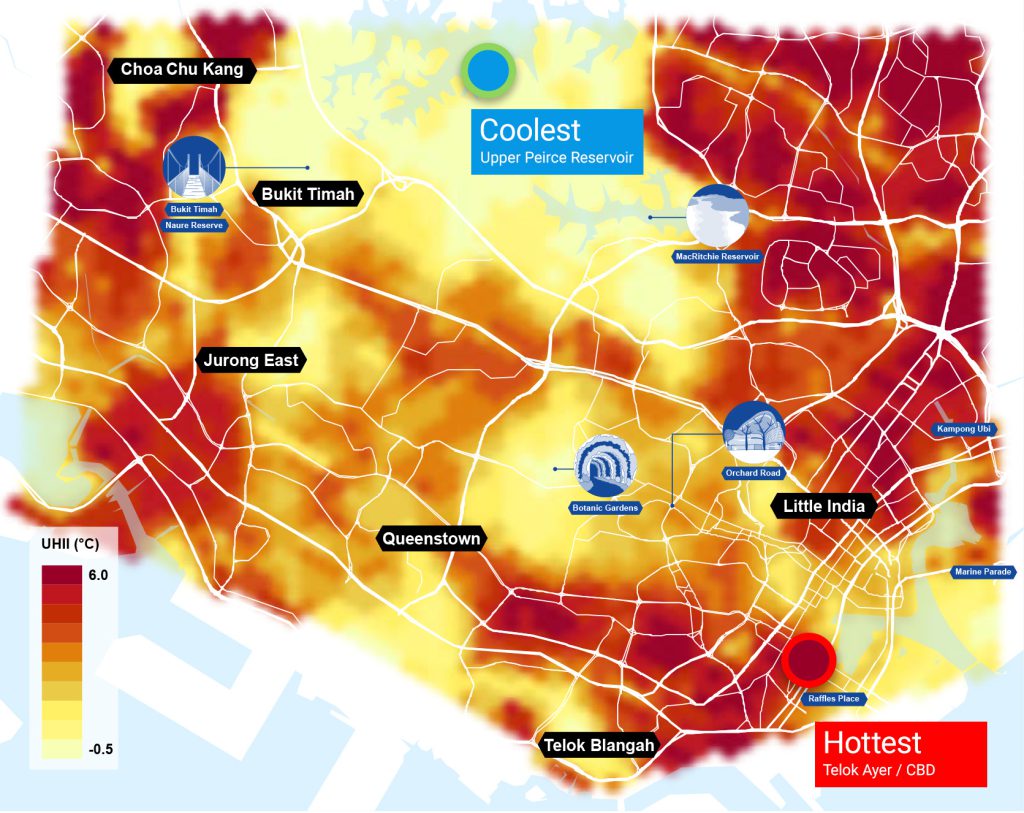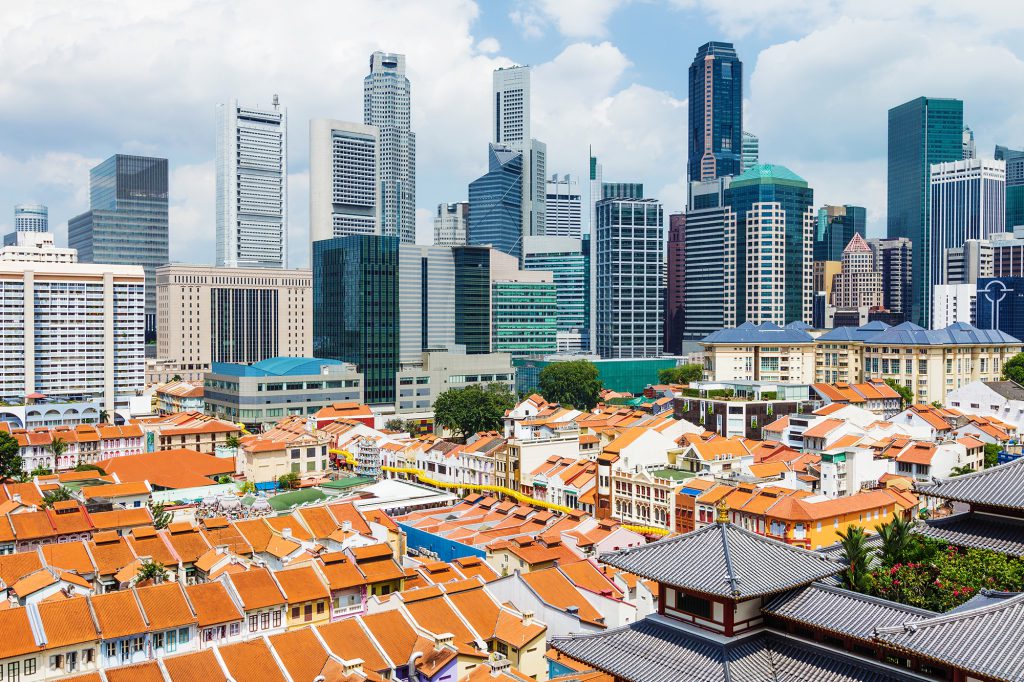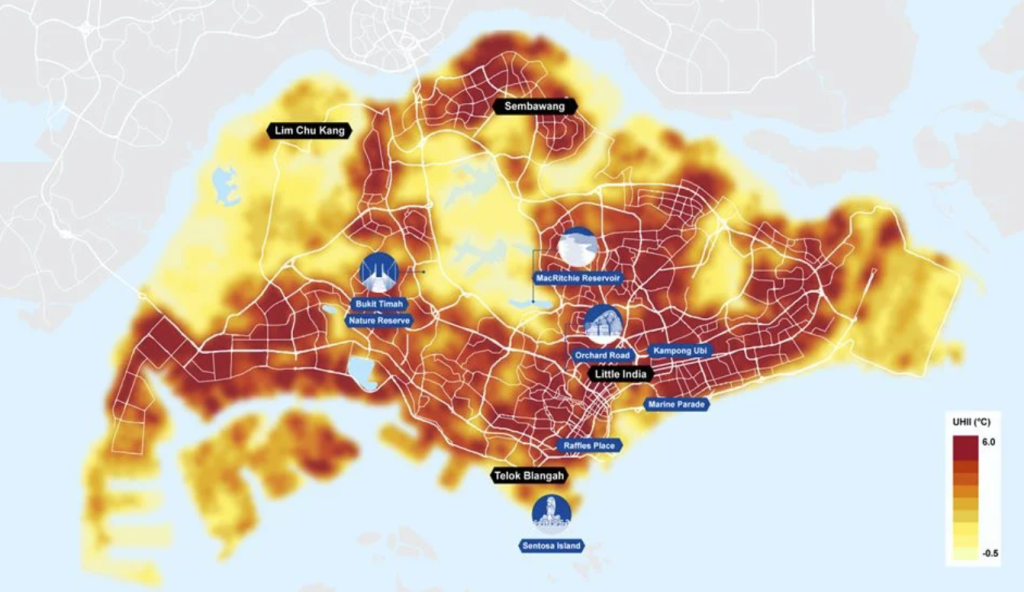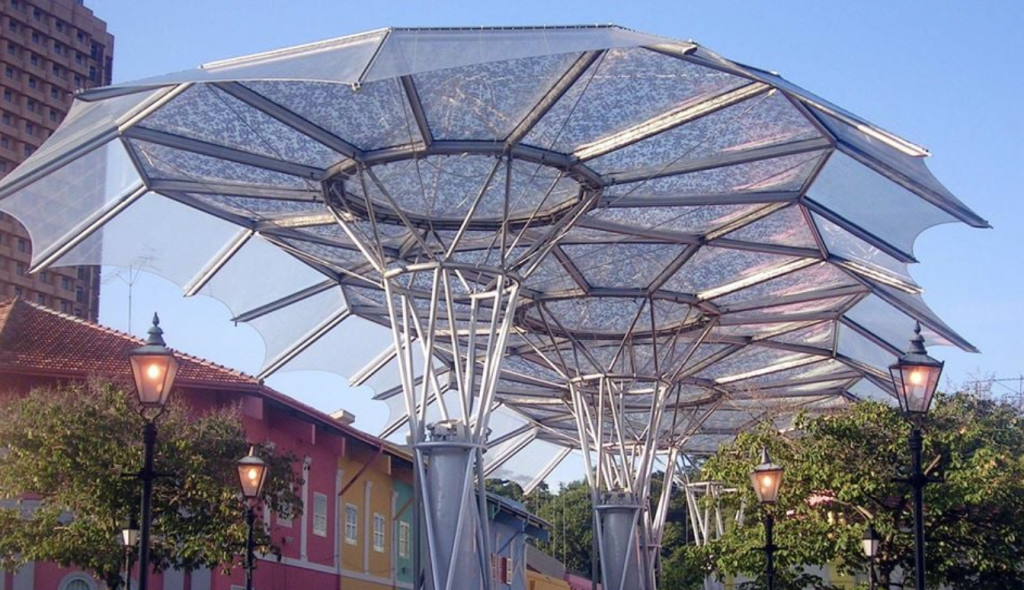Location, location, location, goes the mantra in real estate — and it appears to be true not only in terms of the attractiveness of your home but also how cool or hot it may be.
Despite its small size, this applies to Singapore as well, where temperature differences between the hottest and coolest locations in the city could differ by as much as 6.5 degrees Celsius, according to Arup.
This British built environment consultancy company has developed UHeat, a tool mapping temperatures in cities around the world, with the purpose of aiding smart urban planning, which would mitigate the effect of Urban Heat Islands — spots in densely built-up environments where temperatures are considerably higher.
The Great Wall of Chinatown
Singapore’s hottest island was found, unsurprisingly, down in the CBD, and around the Telok Ayer area, tightly packed with skyscrapers, which leave relatively little space for vegetation, which would provide a cooling effect. Only 6 per cent of the space down there is covered with some form of greenery.

This is also why even neighbouring streets filled with low-rise shophouses are not spared since the wall of tall buildings prevents the nearby coast and reservoirs from providing a cooling effect to the area.
As you can see, this is what separates the much cooler Marina Bay just a few hundred meters away, where the central reservoir, Gardens by the Bay Park and fewer obstacles along the coast allow for the water, air and plant life to reduce the temperatures by a few degrees compared to the neighbouring hot spot.

“Other neighbourhoods experiencing a temperature difference of above 5°C compared to their rural surroundings, included industrial zones like Kampong Ubi, areas with high population density in Rochor and Marine Parade, and areas within Orchard as well as Sembawang.”
Arup

On the opposite end of the spectrum (and also hardly a shocker to anybody) was the Upper Peirce Reservoir Park, directly in the middle of Central Catchment Area. Water and lush jungle provide a continuous cooling effect, leading to a difference of 6.5 degrees in comparison to CBD.
These are two extremes, of course – nobody is going to live in the forest, and few have to deal with the scorcher down in the city centre.
However, these observations indicate just how much water and vegetation can help to reduce temperatures in an urban environment. Just look at the heatmap again and notice the impact Botanic Gardens have on surrounding areas. A large park in the middle of the city helps to bring temperatures down even beyond its boundaries.
Of course, this isn’t news in Singapore, where the strategy of planting rain trees and filling empty spots with greenery has been implemented for decades. Still, there’s more that can be done.
“Despite a high population, we have a lot of greenery throughout the city that mitigates the effects of urban heat islands. However, there’s still more to do when it comes to designing for heat. We all have a tendency to retreat to airconditioned environments when temperatures rise – from a sustainability perspective, this is far from ideal given the reliance on energy and the inequality of this approach as not all citizens have the luxury of working indoors. It’s important we consider more sustainable strategies for mitigating heat, such as incorporating the natural environment into our design. ”
Tony Chan, Associate Principal, Cities and Planning, Arup
Mimicking nature
Of course, a city is still a city and there are always going to be limits to how much we can plant in between our buildings to bring temperatures down.
When that’s not possible, we can do what’s widely known as the sincerest form of flattery — immitate. In this case, nature itself.
One such example in Singapore is Clarke Quay, where Arup provided environmental engineering services in the creation of the iconic “angels” — umbrella-like glass roofing covering the nightlife area, mimicking tree canopy, and providing cover from both the sun and the rain for the people below.

Coolest places to live in SG?
Despite having satellite data and sophisticated tools tracking temperatures in the city, the answer to this question is not easy.
As you can see from the findings reported above, the environmental situation can change greatly in a span of just a few hundred meters if local architecture traps rather than dissipates heat. Your experience of living in Marina Bay may be vastly different from that in Chinatown.
Aside from living in a park or on a waterfront, whether a particular place is cool and comfortable is going to depend on the specific features of the location.
Densely packed high-rise buildings are going to trap more heat both between each other as well as immediately neighbouring areas. Meanwhile, low-rise housing isn’t always shielded from high temperatures if it just happens to be surrounded by skyscrapers blocking vital airflow.
Proximity to parks and reservoirs always helps, of course — and, who knows, maybe real estate agents or property developers will soon begin incorporating heatmaps in their promotional brochures?
Fortunately, more keeps being done to introduce as much nature to all of Singapore’s neighbourhoods. And while temperatures can’t always be reduced across a large area, we can at least keep people cool in the most popular spots.












